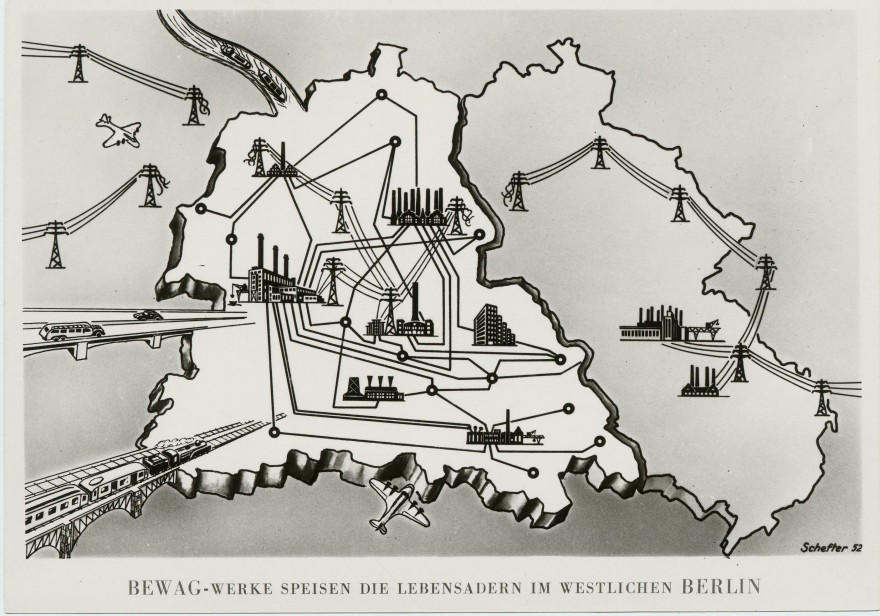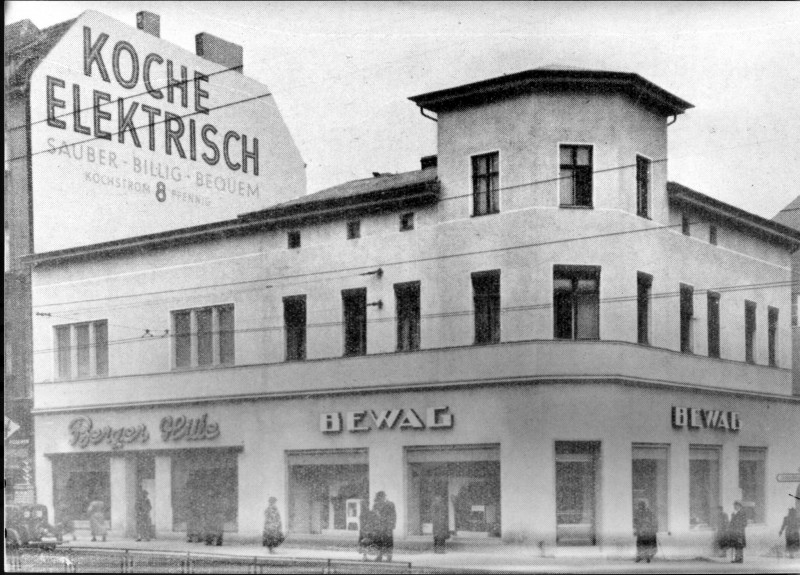Separation and reunion (Bewag – Berlin)
Nowhere is German history so tangible as in Berlin. Isolated operation in West Berlin required all reserves, especially during the blockade. In the East, the recovery continued despite the planned economy. The merger after reunification brought new challenges.

Electricity supply in the divided city of Berlin in the 1950s ID: VF000502
The company’s economic rise first ended with the Second World War. The end of the war was the beginning of a hard time for Berlin and for Bewag - the self-destruction by the workforce demanded by the Nazis was luckily averted. Plants were dismantled by the Allies, and there was a power shortage and a lack of staff - a time of darkness in the truest sense of the word.
Just when the situation was slowly beginning to stabilise, Bewag, like Berlin and Germany as a whole, was divided. Two years of blockades of the three western sectors of Berlin by the eastern sector followed. In 1948/49 the situation got worse; Berlin was supplied from the air. The historical Candy Bombers should actually be called Coal Bombers, as 416,835 tonnes of coal was flown in by approximately 55,200 flights for Bewag’s energy production alone. In addition, a large number of the components for a new power plant were transported by the airlift. A logistical tour de force.

Bewag advertisement. Exterior view of customer center in Berlin-Steglitz, Schloßstraße 98 / corner Kieler Straße. Year: 1938 | Place: Berlin | Creator: Unknown | ID: VF000507
Construction, reunification, liberalisation
After the official division, the company grew again. New power plants were built in the West, and the district heating and the inner city electricity grids were continuously expanded. All this was achieved under the difficult conditions of isolated operation, in which security of supply was paramount.
In the eastern part of the city, the employees of Bewag, which swapped its traditional name for VEB Energieversorgung Berlin in 1978, were also more or less successful: Here, building, expansion and modernisation also went on. It was not the isolated operation of the West, but the shortcomings of a planned economy, that sometimes made operations difficult there.
East and West come together
The fall of the Berlin Wall in 1989 cleared the way for German reunification - also for the two energy providers. Now it was time to merge the two companies and the two workforces, which had not only worked under different social systems, but had also developed different structures and cultures.
On 23 February 1994, the former Energieversorgung Berlin Aktiengesellschaft (EBAG) was legally merged with Bewag. At the start of 1996, Energieversorgung Berlin (EVB), which emerged from EBAG, was also integrated into the parent company. The restoration of a single power supply company under the name of Bewag was therefore complete.;
Equipped for liberalisation
Almost simultaneously with the reunification of Bewag, the network was connected to VEAG’s national grid. This drew a line under the adverse economic situation of isolated operation.
In 1997, the State of Berlin sold its shares to Bewag. The new owners of these shares were, in about equal parts, the US energy supplier Southern Energy, later Mirant, as well as PreussenElektra and Bayernwerke. Bewag is therefore the first fully privatised company among public electricity providers in Germany.
